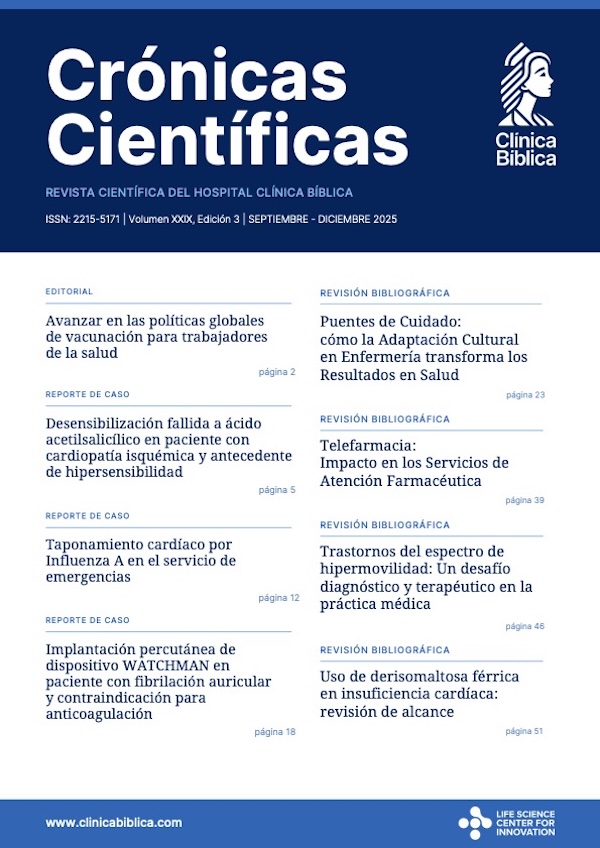- Visto: 1041
Revisión Bibliográfica
Importancia de la nutrición infantil para prevenir las enfermedades crónicas no comunicables
Importance of infant nutrition to prevent chronic non-communicable diseases
Edición XVII Enero - Abril 2021
DOI: https://doi.org/10.55139/XJHW1720
APA (7ª edición)
Martínez Vásquez, J. (2021). Importancia de la nutrición infantil para prevenir las enfermedades crónicas no comunicables. Crónicas científicas, 17(17), 42-49. https://doi.org/10.55139/XJHW1720.
Vancouver
Martínez Vásquez J. Importancia de la nutrición infantil para prevenir las enfermedades crónicas no comunicables. Cron cient. 1 de abril 2021; 17(17): 42-9.
Dr. Jorge Martínez Vásquez
Médico y cirujano.
Licenciatura en Medicina y Cirugía, Universidad de Costa Rica.
Especialista en Pediatría.
Maestría en Nutrición Pediátrica. Universidad de Costa Rica. Miembro del Colegio de Médicos y Cirujanos de Costa Rica.
Miembro de la Asociación de Médicos del Hospital Clínica Bíblica.
Coordinador del Servicio de Pediatría, Hospital Clínica Bíblica. San José, Costa Rica.
Resumen
El estado nutricional del ser humano tiene un papel fundamental en la salud. Desde antes del embarazo, la nutrición de la mujer impactará la salud futura de la progenie. De ahí la importancia de cuidar todos los aspectos de la alimentación para evitar mala nutrición y así prevenir enfermedades crónicas no trasmisibles. La salud de la madre previa a la concepción determinará el peso y la edad gestacional del niño al nacer y esto incidirá en el desarrollo futuro de la hipertensión, la diabetes y las enfermedades cardiovasculares.
Palabras claves
Nutrición, micronutrientes, epigenética.
Abstract
The nutritional status of the human being has a fundamental role in health. From before pregnancy, the nutrition of the woman will impact the future health of the progeny. Hence the importance of taking care of all aspects of diet to avoid poor nutrition and thus prevent chronic non-communicable diseases. The health of the mother prior to conception will determine the weight and gestational age of the child at birth. That will influence the future development of hypertension, diabetes, and cardiovascular diseases in the child.
Keywords
Nutrition, micronutrients, epigenetics.
Bibliografía
Thurnham, David, I. (2013). Nutrition of Adolescent Girls in Low- and Middle-Income Countries. Sight and Life, 27(3), 26-37. www.ingentaconnect.com/content/nsinf/ fnb/2013/ 00000034/a00102s1.
Barker, D. J.P., Osmond, C., Golding, J., Kuh, D. y Wadsworth, M. E. J. (1989). Growth in utero, blood pressure in childhood and adult life, and mortality from cardiovascular disease. British Medical Journal, 298(6673), 564-567. https:// doi.org/10.1136/bmj.298.6673.564.
Barker, David J.P., Osmond, C., Forsén, T. J., Kajantie, E. y Eriksson, J. G. (2005). Trajectories of growth among children who have coronary events as adults. New England Journal of Medicine, 353(17), 1802-1809. https://doi. org/10.1056/NEJMoa044160.
Bhutta, Z. A., Das, J. K., Rizvi, A., Gaffey, M. F., Walker, N., Horton, S., Webb, P., Lartey, A. y Black, R. E. (2013). Evidence-based interventions for improvement of maternal and child nutrition: What can be done and at what cost? The Lancet, 382(9890), 452-477. https:// doi.org/10.1016/S0140-6736(13)60996-4.
Dean, S. V., Imam, A. M., Lassi, Z. S. y Bhutta, Z. A. (2012). Systematic Review of Preconception Risks and Interventions. Division of Women and Child Health, Aga Khan University, 12(3), 1-509. https://globalmotherchildresearch. tghn.org/site_media/media/articles/ Preconception_Report.pdf
Dean, S. V., Lassi, Z. S., Imam, A. M. y Bhutta, Z. A. (2014). Preconception care: Nutritional risks and interventions. Reproductive Health, 11(Suppl 3), 1-15. https://doi. org/10.1186/1742-4755-11-S3-S3.
Dos Santos Silva, I., De Stavola, B. L., Hardy, R. J., Kuh, D. J., McCormack, V. A. y Wadsworth, M. E. J. (2004). Is the association of birth weight with premenopausal breast cancer risk mediated through childhood growth? British Journal of Cancer, 91(3), 519-524. https://doi. org/10.1038/sj.bjc.6601972.
Gluckman, P. D. y Hanson, M. A. (2004). Maternal constraint of fetal growth and its consequences. Seminars in Fetal and Neonatal Medicine, 9(5), 419-425. https://doi. org/10.1016/j.siny.2004.03.001.
Gluckman, P. D., Hanson, M. y Cyrus Cooper, K. L. T. (2008). Maternal constraint of fetal growth and its consequences. Bone, 23(1), 1-7. https:// doi.org/doi:10.1016/j.siny.2004.03.001.
Hanson, M. A., Bardsley, A., De-Regil, L. M., Moore, S. E., Oken, E., Poston, L., Ma, R. C., McAuliffe, F. M., Maleta, K., Purandare, C. N., Yajnik, C. S., Rushwan, H., & Morris, J. L. (2015). The International Federation of Gynecology and Obstetrics (FIGO) recommendations on adolescent, preconception, and maternal nutrition: "Think Nutrition First". International journal of gynaecology and obstetrics: the official organ of the International Federation of Gynaecology and Obstetrics, 131 Suppl 4, S213–S253. https://doi.org/10.1016/S0020- 7292(15)30034-5.
Hofman, P. L., Regan, F., Jackson, W. E., Jefferies, C., Knight, D. B., Robinson, E. M. y Cutfield, W. S. (2004). Premature birth and later insulin resistance. New England Journal of Medicine, 351(21), 2179-2186. https://doi. org/10.1056/NEJMoa042275.
Jaenisch, R. y Bird, A. (2003). Epigenetic regulation of gene expression: How the genome integrates intrinsic and environmental signals. Nature Genetics, 33(3S), 245-254. https://doi.org/10.1038/ng1089
Karakochuk, C. D., Whitfield, K. C., Green, T. J. y Kraemer, K. (2017). The Biology of the First 1,000 Days. Nueva York, Estados Unidos: CRC Press. https://doi.org/10.1201/9781315152950.
Kensara, O. A., Wootton, S. A., Phillips, D. I., Patel, M., Jackson, A. A. y Elia, M. (2005). Fetal programming of body composition: Relation between birth weight and body composition measured with dual-energy X-ray absorptiometry and anthropometric methods in older Englishmen. American Journal of Clinical Nutrition, 82(5), 980-987. https://doi. org/10.1093/ajcn/82.5.980
Kirkwood, T. B. L. y Shanley, D. P. (2005). Food restriction, evolution and ageing. Mechanisms of Ageing and Development, 126(9 SPEC. ISS.), 1011-1016. https://doi.org/10.1016/j. mad.2005.03.021.
Lenders, C. M., McElrath, T. F. y Scholl, T. O. (2000). Nutrition in adolescent pregnancy. Current Opinion in Pediatrics, 12(3), 291- 296. https://doi.org/10.1097/00008480- 200006000-00021.
McPherson, N. O., Owens, J. A., Fullston, T. y Lane, M. (2015). Preconception diet or exercise intervention in obese fathers normalizes sperm microRNA profile and metabolic syndrome in female offspring. American Journal of Physiology - Endocrinology and Metabolism, 308(9), E805-E821. https://doi.org/10.1152/ ajpendo.00013.2015
NCD Risk Factor Collaboration. (2017). Worldwide trends in body-mass index, underweight, overweight, and obesity from 1975 to 2016: a pooled analysis of 2416 population-based measurement studies in 128·9 million children, adolescents, and adults. The Lancet, 390(10113), 2627-2642. https:// doi.org/10.1016/S0140-6736(17)32129-3. Patton, G. C., Sawyer, S. M., Santelli, J. S., Ross, D. A., Afifi, R., Nicholas, B., Arora, M., Azzopardi, P., Baldwin, W., Bonell, C., Kennedy, E., Mahon, J., Mcgovern, T., Mokdad, A. H., Patel, V., Petroni, S., Reavley, N., Taiwo, K., Waldfogel, J., Barroso, C., Bhutta, Z., Fatusi, A., Mattoo, A., Diers, J., Fang, J., Ferguson, J., Wackremarathne, D., Ssewamala, F. y Viner, R. M. (2016). Lancet Commission on Child health. Lancet, 387(10036), 2423-2478. https://doi. org/10.1016/S0140-6736(16)00579-1.
Reyes, R. B. y Carrocera, L. A. F. (2015). Programación metabólica fetal. Perinatología y Reproducción Humana, 29(3), 99-105. https://doi.org/10.1016/j.rprh.2015.12.003.
Rudolph, M. C., Young, B. E., Lemas, D. J., Palmer, C. E., Hernandez, T. L., Barbour, L. A., Friedman, J. E., Krebs, N. F. y Maclean, P. S. (2017). Early infant adipose deposition is positively associated with the n-6 to n-3 fatty acid ratio in human milk independent of maternal BMI. International Journal of Obesity, 41(4), 510-517. https://doi.org/10.1038/ ijo.2016.211.
Spalding, K. L., Arner, E., Westermark, P. O., Bernard, S., Buchholz, B. A., Bergmann, O., Blomqvist, L., Hoffstedt, J., Näslund, E., Britton, T., Concha, H., Hassan, M., Rydén, M., Frisén, J. y Arner, P. (2008). Dynamics of fat cell turnover in humans. Nature, 453(7196), 783- 787. https://doi.org/10.1038/nature06902.
van der Beek, E. (2018). Nutritional Programming and Later Life: The role of macronutrient quality during the first 1,000 days. Sight & Life E-magazine, 32(1), 46-52.
Victora, C. G., Adair, L., Fall, C., Hallal, P. C., Martorell, R., Richter, L. y Sachdev, H. S. (2008). Maternal and child undernutrition: consequences for adult health and human capital. The Lancet, 371(9609), 340- 357. https://doi.org/10.1016/S0140- 6736(07)61692-4.
APA (7ª edición)
Martínez Vásquez, J. (2021). Importancia de la nutrición infantil para prevenir las enfermedades crónicas no comunicables. Crónicas científicas, 17(17), 42-49. https://doi.org/10.55139/XJHW1720.
Vancouver
Martínez Vásquez J. Importancia de la nutrición infantil para prevenir las enfermedades crónicas no comunicables. Cron cient. 1 de abril 2021; 17(17): 42-9.
Esta obra está bajo una licencia internacional Creative Commons: Atribución-NoComercial-CompartirIgual 4.0 Internacional (CC BY-NC-SA 4.0)

Realizar búsqueda
Última Edición
Ediciones Anteriores






